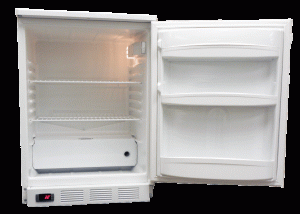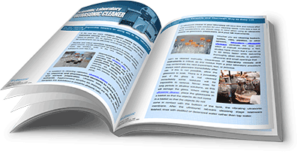How to Store Hepatitis Vaccine
Proper refrigerated storage of hepatitis vaccines is essential to maintain potency as well as to avoid substantial monetary losses due to lack of potency and the time and inconvenience to revaccinate patients. Proper vaccine storage is also required for providers participating in the Adult Hepatitis Vaccine Project, which is equivalent to the Vaccines for Children program. AHVP compliance is necessary for providers participating in the project and receiving state-supplied vaccines.
Step 1: Calculate Vaccine Storage Requirements
Healthcare providers should calculate the number of hepatitis vaccines they will store in their refrigerator. This is done by adding the number of public and private vaccines on hand from the last order and multiplying that number by 1.25 to determine total doses. Using the table below match this number with the minimum cubic feet required for storage.
|
Maximum doses | Minimum cubic feet |
|
1000-2000 |
40 |
|
900-1000 |
36 |
|
801-900 |
21-23 |
|
701-800 |
17-19.5 |
|
400-700 |
11-16.7 |
|
100-399 |
4.9-6.1 |
Step 2: Follow Correct Vaccine Storage Procedures
Pharmacy-grade refrigerators such as the 24 cubic foot Norlake NSPR 241WWW/0 are recommended for correct hepatitis vaccine storage. A smaller unit in compliance is the 5.5 cubic foot Norlake LR061WWW/0. These and other units are available from Tovatech.)
An important purchasing decision is buying an automatic defrost or frost-free refrigerator-only unit. Combination refrigerator-freezers are not permissible because air circulating to the refrigerator compartment from the freezer compartment could freeze the vaccines and destroy them.
- Refrigerators must be capable of maintaining the correct vaccine storage temperature of 35⁰ to 46⁰F year around.
- Vaccines must be kept 2-3 inches away from walls and the floor of the unit.
- The refrigerators should be used only for vaccines. No lunch pails or beverage bottles.
- Place an NIST-certified thermometer in the center of the unit. If the refrigerator is not equipped with a digital LED display temperature controller and alarm an optional digital thermometer monitor and alarm will alert staff of temperature excursions.
Ten Tips for Hepatitis Vaccine Storage
- Before purchasing a hepatitis vaccine refrigerator make certain you have adequate floor space and back, side and top clearances
- Avoid placing the refrigerator in areas of temperature extremes such as near heating outlets and in direct sunlight
- Have a dedicated power outlet marked “Do Not Disconnect”
- Set the temperature at 40⁰F
- Allow 5 days of operation to confirm the unit is running at the proper temperature before loading it with vaccines
- Fill door shelves and empty spaces with chilled water bottles to help maintain temperature
- Record temperature twice daily and keep the records in a safe place
- When restocking place early expiration dates in front
- Have a backup plan in case of a power outage
- Clean and maintain the unit following the manufacturer’s instructions
The CDC as well as state public health organizations offer guidelines for vaccine storage and handling. Ideally these are managed by a vaccine coordinator. The following tips are geared for hepatitis vaccines but can apply to most any refrigerated vaccine.
Before purchasing a hepatitis vaccine refrigerator make certain you have adequate floor space and back, side and top clearances
Contact the vaccine storage professionals at Tovatech for expert information on selecting the correct refrigerator for your healthcare facility and for further details on storage and handling procedures.

